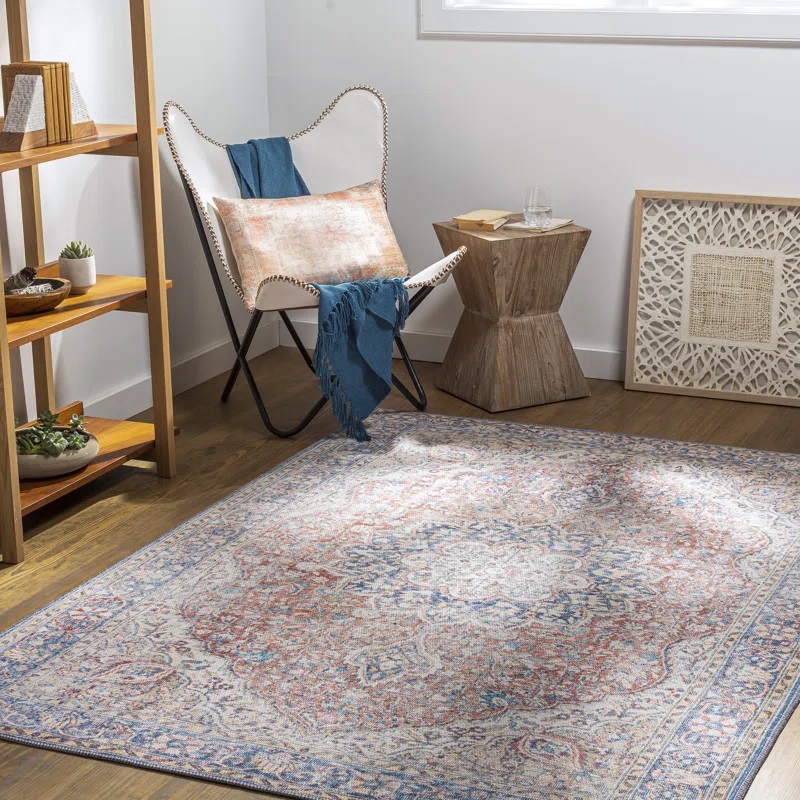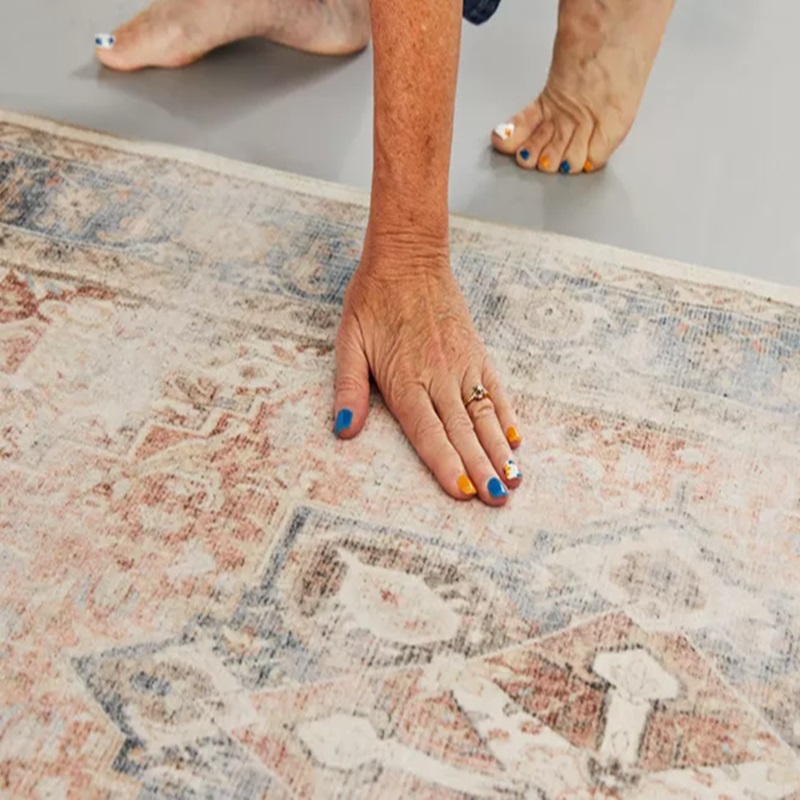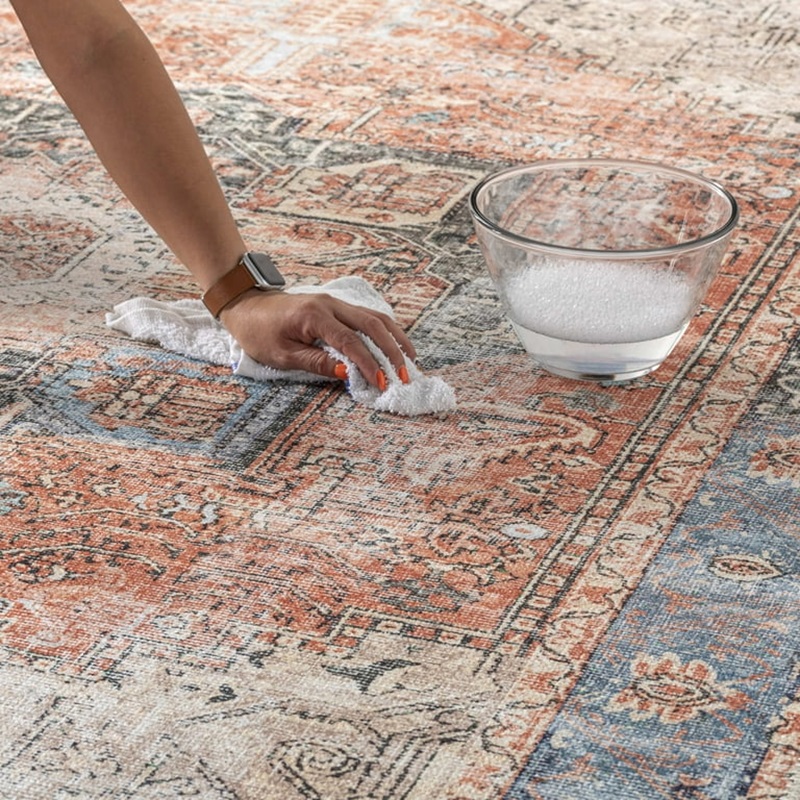Nothing compares to the charm of vintage-looking rugs. Only one of these can enhance the look even of the most plain room. And the great thing is you can use it anywhere in the house, as well as outside of it. If you’re searching to buy a vintage style rug for your living room, bedroom or patio, here are a few things to have in mind.
Vintage Rugs Styles

The style of your rug depends on how your home looks and what you like. You’ll come across various styles like traditional Persian, Oriental, Berber, or Moroccan. If you prefer something more modern, choose a farmhouse, mid-century, coastal, country, or geometric style rug. If you’re a fan of a more natural look, choose from materials like jute, silk, sheepskin, leather, or cowhide. The bohemian style is also popular, with shag, kilim, Dhurrie, Ikat, or Southwest designs. All of these styles have a vintage vibe.
A vintage style rug is great for any room in your house, even for your outdoor space (patio or lawn). This type of rug works well in minimalist modern homes, but also highly decorated homes. For a farmhouse-style living room, choose a vintage rug in pale blue. It will create a calm feeling in the room and go well with white, beige, and yellow tones.
What About Size?
Size and shape are important factors to consider when purchasing vintage rugs. It’s crucial to find one that fits well in the room and the chosen area where it will be placed. You don’t want it to be too big and cover the entire floor, nor do you want it to be too small and look awkward under your coffee table.
• Living room – If your sofa is against a wall, make sure the front legs of the sofa and the armchairs are placed on the rug. If you have a spacious living room with floating furniture, the rug should accommodate all the furniture, including both front and back legs, while still leaving some space around.
• Dining room – When selecting a rug for the dining room, make sure to measure the size of your table. Whether it’s square or round, the rug should extend at least 60cm on all sides, allowing chairs to be pushed back from the table and remain within the boundaries of the rug.
• Bedroom – In a spacious bedroom, choose a large rug that comfortably fits the entire bed and night tables, extending beyond the edges. It’s best to select a rug with extra width on both sides. For smaller bedrooms, opt for a rug that covers about one-third of the bed’s base. You can also consider placing smaller area rugs on either side of the bed.
• Kitchen – Smaller rugs with dimensions like 60 x 90cm or 120 x 180cm are ideal for kitchens or entryways.
• Outdoors – Outdoor spaces require larger rugs that cover the designated area and complement the outdoor setting.
Be Specific
Make sure to be specific when looking for a vintage rug. Many rugs out there are made to look old, so it’s important to do your homework. Check where the collector gets their rugs from and focus on regions known for artisanal rug-making. The more you know about your rug’s history, the more you’ll value it. And it’ll make for an interesting story when people ask about its origins.
Check the Materials

Price Fibres
Vintage rugs come in many different materials, so it’s understandable if you feel overwhelmed trying to find the right one. You have options like wool, cotton, silk, sisal, or jute, which are known for being durable, long-lasting, and comfortable to walk on. Just keep in mind that these natural fabrics can be a bit pricey, especially silk, which is also sensitive to water damage.
Affordable Fibres
On the other hand, there are more affordable options like viscose, banana silk, or bamboo silk, which are artificial silks. These materials often have attractive patterns that can hide dirt effectively. However, it’s important to note that viscose is highly absorbent and can easily attract moisture.
Synthetic Fibres
If these options are out of your budget, you can always go for synthetic fabrics like polyester, acrylic, or polypropylene. These materials are generally affordable, resistant to stains, and easy to clean. Just be aware that they are more prone to bacterial and mildew contamination, and may need to be replaced sooner than natural wool, for example.
What Are Piles?
When it comes to rugs, you’ll often come across the term “pile” which refers to its density or thickness. Rugs with a rougher texture tend to have a higher pile compared to those with intricate designs. Now, there are two types of rug piles: low-pile rugs, which have shorter fibres and loops (also known as flatweaves), perfect for high-traffic areas like kitchens; and high-pile rugs, which have longer and looser fibres (like shag or Moroccan rugs), giving them a plush feel and making them great for bedrooms or living rooms.
How to Clean Your Rug?

Proper maintenance is key to keeping it looking fabulous for a long time. While you’ll eventually need to give it a good wash, you can always hire a professional to handle that for you. In the meantime, make sure to keep your rug clean and protected from any potential damage. Different materials require different methods of maintenance. For instance, synthetic rugs are great for vacuuming but can easily absorb dirt and oil. On the other hand, wool rugs have natural oils that prevent spills from seeping into the fibres, and hand-knotted rugs should be gently blotted instead of scrubbed to avoid any damage. As for cotton and silk rugs, it’s best to leave the cleaning to the professionals to avoid any potential mishaps.
